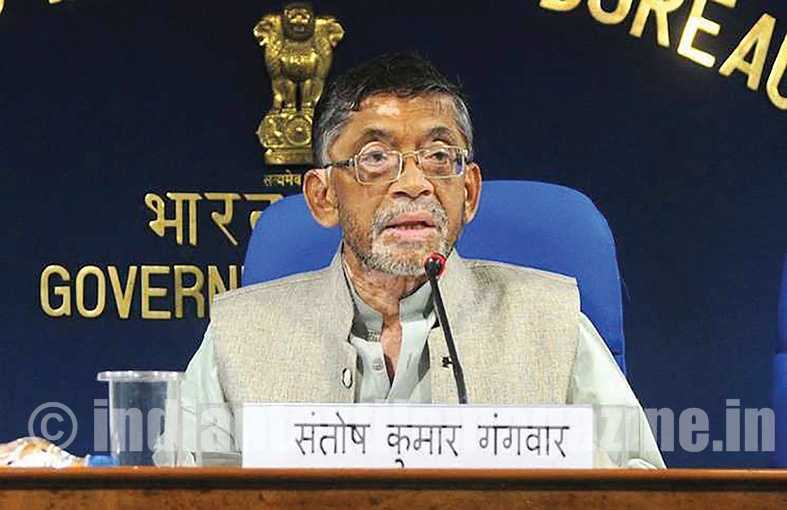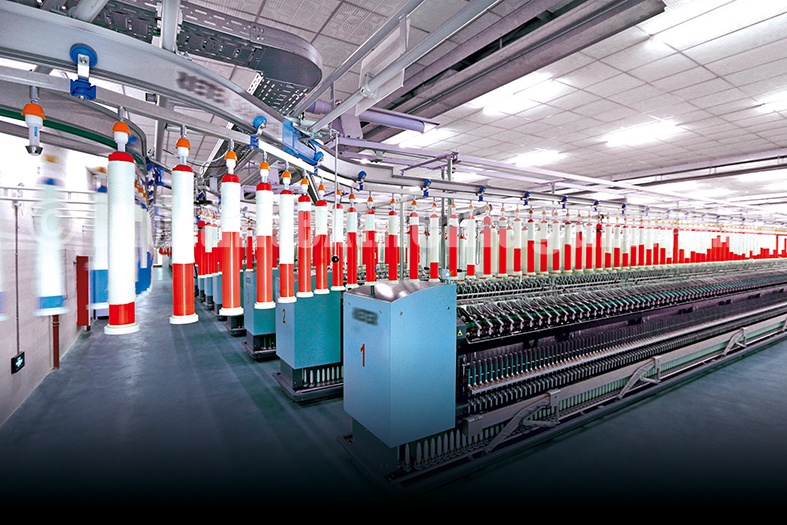Over Rs. 6,500 crores has been spent by the Ministry of Textiles on various schemes for promotion and development of the textile sector. Approximately five lakh additional jobs have been created in the sector in the past two years.
Addressing a press conference in New Delhi, the Textiles Minister, Mr. Santosh Kumar Gangwar, observed: “It is important that handloom weavers get due respect as well as compensation for their work. Our aim is to increase the earnings of handloom weavers to Rs. 500 per day. A range of initiatives have been taken, keeping this goal in mind.
To safeguard the interests of domestic cotton growers, a well-planned, largest-ever minimum support price operation was carried out by the Cotton Corporation of India in the 2014-2015 cotton season in all the 11 cotton-producing States. This operation was highly successful, with procurement crossing the 86-lakh bales level up to March 30, 2015. Of this only 60,000 bales is left in stock, the rest having been sold. Apart from this, in the 2015-2016 season too, around nine lakh bales were procured through MSP operation, of which there is an unsold stock of 3 lakh bales at present.

The Minister apprised the media of the additional initiatives taken by the Ministry in the past two years:
Apparel and handicraft exports, each recorded 22 per cent export growth, and textile exports overall grew by eight per cent during the last two years as compared to the previous two years. The share of textile exports in total exports from India has gone up from 13 per cent to 15 per cent.
The Amended Technology Upgradation Fund Scheme (ATUFS) was introduced in January 2016 with a Budget provision of Rs. 17,822 crores for the next seven years. This is expected to attract an investment of Rs. 1 lakh crores and generate employment for 30 lakh persons.
For further promotion of handlooms, the India Handloom Brand was launched on August 7, 2015, by Prime Minister Modi to ensure quality assurance to consumers and increased earnings to weavers. Credit flow to handloom weavers has thus been streamlined.
Further, the Integrated Processing Development Scheme was rolled out to provide up to 50 per cent assistance for common effluent treatment plants with zero liquid discharge system, subject to a ceiling of Rs. 75 crores. Six projects were sanctioned to support processing clusters.
Mr. Gangwar further disclosed that garment manufacturing was launched in the North East with the setting up of apparel and garment centres in all the eight States in the region to promote entrepreneurship in apparel manufacturing and provide employment to the local population. The units in Nagaland and Tripura were inaugurated in April 2016 and the unit in Mizoram in June 2016. Centres are ready in the remaining States, excepting Sikkim.
A total of 24 new textile parks were sanctioned under the Scheme for Integrated Textile Parks with a potential investment of Rs. 4,500 crores and employment for 66,000 people. Towards skilling under ISDS: 3.75 lakh youth have been trained in textile trades and 70 per cent of the trainees provided jobs.
Referring to the other initiatives taken by the Centre, he said a new scheme for promotion of geo-textiles in the north-eastern region was launched in March 2015 at an outlay of Rs. 427 crores for providing quality infrastructure in the region.
For handicrafts promotion under “Linking Textiles with Tourism”, special projects for integrated development and promotion of handicrafts have been sanctioned in five States to benefit one lakh artisans.
While silk production exceeded 29,000 metric tonnes during 2015-16, bivoltine silk production registered a growth of 51 per cent over previous years, reducing import of raw silk from China.
A major impetus was given to powerloom sector growth through in situ upgradation of plain powerlooms – 55,000 looms were upgraded at a cost of Rs. 60 crores, and rapier kits and enhanced subsidy of 75 per cent and 90 per cent respectively for SCs and STs were notified under the scheme.
The largest-ever MSP operation in value terms was carried out in the 2014-15 cotton season, procuring more than 86 lakh bales to mitigate the distress of cotton farmers.
The Jute Common Facility Centre Scheme was launched in September 2015, and the norms for mandatory packaging of foodgrains and sugar in jute strengthened.
The Minister also referred to the National Textile Corporation (NTC) turning around and coming out of the purview of BIFR in 2014, sanctioning of a new NIFT campus at Srinagar at a cost of Rs. 325 crores and commencement of operation of the new extension centre of NIFT at Varanasi.
For promotion of the wool sector, a total grant of Rs. 29.41 crores has been released under the Pashmina Promotion Programme, he added.
At the press conference, Mr. Gangwar also launched a booklet on the services rendered by the Government to the textiles sector during the past two years.
